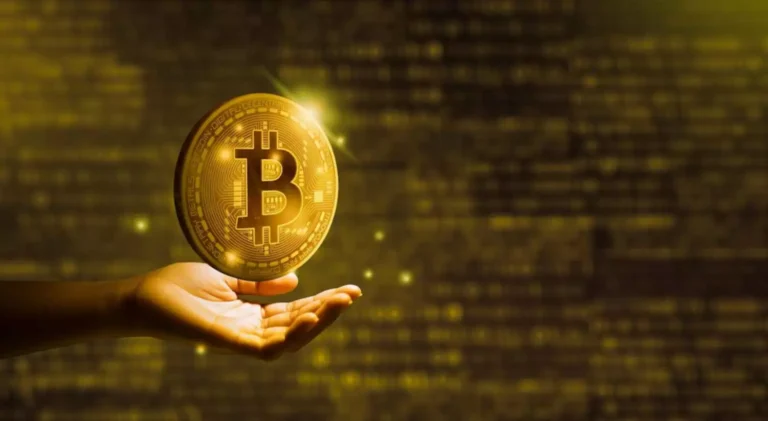By default, burning crypto serves as a deflationary measure that helps the value of the crypto asset. As a result, the value of the crypto asset typically will increase amid the identical stage of demand. Cryptocurrency coin burning is a deflationary and sometimes bullish practice that decreases the circulating provide of a coin or token.
One of the mechanisms that algorithmic stablecoins use to manage their costs is coin burning. When the price of the stablecoin is above the target price, it means there is an extra provide of the stablecoin available in the market. To reduce the supply and convey the value back right down to the target, the algorithmic stablecoin initiates a coin-burning mechanism. Proof-of-Burn (PoB) is a consensus mechanism where customers “burn” their cryptocurrency to earn the right to create a model new block. This helps the community to maintain its safety and stop attacks, as burning tokens requires a monetary value that disincentivizes malicious habits. Oftentimes, crypto is burned by owners or developers of crypto initiatives.
Burning crypto has also developed as a low-energy method for blockchain projects to extend their security and stability. When a project removes superfluous tokens from circulation, it reduces the danger of malicious actors having an extreme quantity of control over the market, Machikhin mentioned. Cryptocurrency projects typically promote new burning features to spice up the price of their coins or tokens, however there is no way to assure burning impacts a cryptocurrency’s worth. Although burning a cryptocurrency reduces its supply, it does not have an effect on market demand. In classical economics, the forces of provide (the availability of goods or services in a market) and demand (how many people want these items or services) decide the truthful value of an asset. If there’s more demand for a coin than provide on an trade, its market worth rises—but the opposite is true if provide will increase without sufficient demand.
Some projects may additionally use coin burning as a type of dividend cost to coin holders. If the owners of a token have a enterprise that generates cash flows, like a crypto change for instance, token holders might receive rewards via coin burning. Essentially, validators must burn some of their tokens to gain the flexibility to create new blocks. Many PoB networks even have a decay system put in place so that the validators’ power lessens over time, incentivizing steady token burning. Since blockchain acts as a distributed, decentralized, and transparent ledger, all transactions (including token burning) are permanently and irrevocably recorded on it.
Coin Burning In Lieu Of Dividends
By adjusting the rewards miners receive via burning, networks can preserve a wholesome balance of miners, making certain network safety and transaction processing efficiency. Using coin burning as a spam-protection mechanism can also https://www.xcritical.in/ occur at the protocol stage. As talked about earlier, transactions will must have a cost to forestall the community from being spammed with faux transactions.
SoFi has no management over the content, services or products provided nor the security or privacy of knowledge transmitted to others via their website. We advocate that you just evaluate the privateness policy of the positioning you are coming into. SoFi does not assure or endorse the merchandise, data or suggestions provided in any third get together web site. ✝ To examine the rates and phrases you might qualify for, SoFi conducts a soft credit score pull that won’t have an effect on your credit score rating. Learn how to apply machine studying techniques to develop, test and implement crypto algorithmic trading strategies.
According to Riley’s Twitter account, however, he misunderstood the instructions on his NFT loan web site and despatched his CryptoPunk to an irrecoverable destination. At the time of Riley’s slip-up, CryptoPunk #685 was valued at roughly $129,000 USD. And it’s what does burning crypto mean one other key instance of how token burning can be utilised to manage crypto worth. “Burning” is a time period used to explain the method of removing cryptos from the circulation.

This steadiness is maintained by minting new tokens or burning them based on the supply of reserve belongings. It reduces the circulating supply, theoretically growing demand and affecting the forex’s value. Publicly traded corporations buy back stock to reduce back the variety of shares in circulation.
Is Burning Cryptocurrency Good Or Bad?
The content material of this article (the “Article”) is provided for basic informational purposes only. It allows anyone to burn NFTs in trade for the cryptocurrency “ASH.” The point? It was type of a sport that performed with the concept of scarcity by adding fungible potentialities to non-fungible belongings. Impacting worth via supply is not a brand new idea, especially in relation to finance.

Some cryptocurrency developers deliberately burn tokens to perform these duties. Cryptocurrency burning entails completely eradicating a particular amount of assets from circulation. This is done by transferring tokens to a designated zero wallet or locking the assets into a wise contract with no risk of unlocking them. Token burning is a practice that projects use to handle the asset’s economics. The burn strategies vary from Proof-of-Burn consensus algorithms to good contracts.
Why Do Firms Burn Cryptocurrency?
Once sent to this tackle, they are completely faraway from circulation and cannot be retrieved. In conclusion, burning tokens will persist as a key strategy within the crypto domain, shaping project directions and market dynamics within the foreseeable future. Burning crypto tokens is a strategic determination within the cryptocurrency realm, aimed toward permanently removing a portion of tokens from circulation. This is not merely about provide discount; it is a multifaceted method with diversified implications.
This will certainly give rise to some fascinating, helpful and thought-provoking blockchain developments for people who understand its utility. In quick, token burning is the digital equal of stashing a ton of money in a safe and locking it with out knowing the access code. In addition, the organization determined to conduct a burn of fifty billion tokens out of a total inventory of sixty eight billion, meant for the Partner Giveaway and Stellar World Giveaway packages. This brings the entire number of XLM cash to 50 billion, and Stellar now not plans to conduct token burns sooner or later. While it can result in value appreciation and increased belief in a project, it could possibly additionally elevate considerations about the long-term provide and potential market manipulation. Token burning is also a potent symbol of a project’s dedication to its vision and longevity.
- In reality, a number of the most popular cryptocurrency projects—such as USDC and Wrapped Bitcoin (wBTC)—wouldn’t be possible without burning protocols.
- So when a consumer is ready to reclaim their Solana tokens, the mSOL have to be burned in order to preserve an accurate circulation number of mSOL to SOL in the protocol.
- This mechanism can automatically burn a part of every transaction that will get sent.
- • In a PoB network, miners need to burn a few of their coins to mine new blocks.
- These burns can take the form of both one-time processes or recurring events that are programmed from the outset.
There is not any evidence yet that burning cryptocurrency tokens automatically increases the worth of that specific cryptocurrency. It decreases supply, theoretically rising demand—which is definitely investor and person beliefs and sentiments about how the markets will react to a decrease in supply. Holding ASH permits burn.artwork customers to purchase and sell digital assets on the platform. Generating a unique medium of trade on burn.artwork is a case research on the facility of creative tokenomics.
What’s Blockchain Interoperability?
It sounds counter-intuitive, however miners then receive rewards within the form of new coins, when they confirm a model new block of transactions. There are a couple of reasons why completely different cryptocurrencies may want to burn cash. Some tasks embrace this process from the beginning, as part of the protocol itself, whereas others choose to take it on in some type later down the road. In the longer term, we would see a broader implementation of crypto burning, meaning more tasks and currencies are going to leverage this mechanism due to its perks. As DeFi continues to develop and evolve, so does the need for stability and management among blockchain tasks. Assets stored in lost wallets with forgotten seed phrases can still technically be accessed, ought to the proprietor remember the phrase.
Burning coins can safeguard a community against Distributed Denial-of-Service (DDoS) attacks and deter spam transactions from congesting the system. Burning is a key mechanism used by most stablecoins, wrapped tokens, and synthetic belongings (synths). Coin burning is used across varied contexts in the crypto world, together with Proof of Burn networks, stablecoins, and wrapped tokens. It serves to maintain balance, defend against spam, and assist token worth while offering both benefits and potential downsides for crypto tasks and buyers. This course of does not eat many resources—other than the energy used to mine the cash before burning them. Depending upon the implementation, you’re allowed to burn the native forex or the currency of an alternate chain, such as Bitcoin.
Because cryptocurrencies aren’t tangible, folks can’t literally light them with a match, however the process is equivalent to tossing greenback bills in a fire. Once a cryptocurrency is “burned,” nobody can purchase, commerce, or transfer it. It adjusts the circulating OHM provide to control the worth of the token. If the worth of OHM drops under a certain level (the worth of 1 DAI) the algorithm will routinely burn a few of its supply to take care of price parity with DAI. Conversely, if the price exceeds this degree, new tokens will be minted and added to the provision to stabilize the token worth. This process called “rebasing” and is the foundation for a raft of stablecoin innovation in DeFi 2.0.
Modifications to current algorithms may repair a variety of the drawbacks and lead to their easier implementation. We might see the automation of processes using smart contracts, making certain that the burning triggers with out anyone’s interference underneath certain circumstances. This system is seen as an energy-efficient model of the PoW consensus mechanism that promotes the project’s longevity and the stability of the interior financial system. While it could suggest a bullish pattern, the impact on worth could be influenced by market situations and the scale of the burn. Burning crypto typically has a bullish impact on value, as decreasing supply amid fixed demand can improve the token’s value. When you store your crypto in a self-custody wallet, you don’t should trust that an exchange is performing in your finest curiosity.
By reducing the number of tokens in circulation, the demand for the remaining tokens can increase, growing their value. Some projects’ communities engage in massive scale token burns, which drives publicity, subsequently raising consciousness of the cryptocurrency, growing demand and raising the token price. This may be significantly helpful for traders who maintain a significant quantity of cryptocurrency, especially if they’re a high profile member of the neighborhood. There can be voluntary token burning, the place holders take the initiative to ship tokens to a burn handle, completely removing them from circulation. As an incentive to encourage customers to burn tokens, some protocols supply customers rewards, such as a share of transaction fees.
